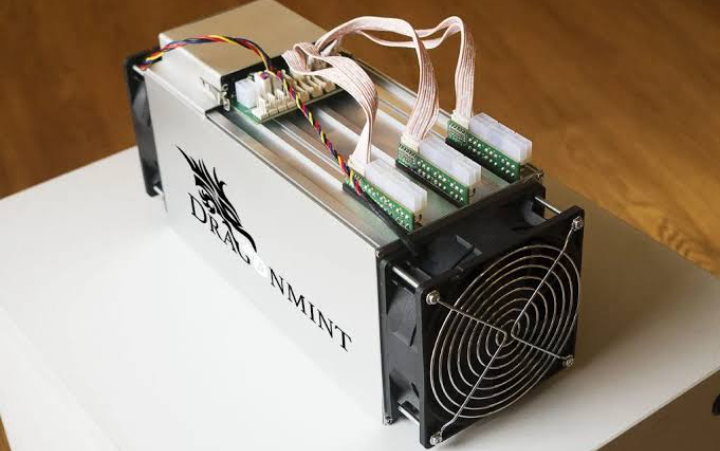Bitcoin’s Most Powerful ASIC Miners for Decent Profits
Introduction
Bitcoin mining has come a long way since it began in 2009. Initially, anyone with a basic computer could participate in verifying transactions and earning rewards. However, as Bitcoin grew in popularity, mining difficulty increased. Today, this difficulty adjusts every two weeks to maintain a steady mining pace regardless of changes in network power. Miners have since transitioned from using regular computers (CPUs) to more powerful devices like GPUs (Graphics Processing Units) and finally to ASICs (Application-Specific Integrated Circuits) – specialized hardware designed exclusively for Bitcoin mining.
The Importance of ASIC Miners in Bitcoin
ASIC miners are essential to Bitcoin’s security. In the Proof-of-Work (PoW) system, miners provide computing power that protects the network, making it difficult for attackers to gain control. ASIC miners are specifically designed for Bitcoin’s SHA-256 algorithm, offering high efficiency with lower energy usage than general-purpose computers. These machines are now the backbone of serious mining operations, playing a critical role in securing the blockchain.
Top ASIC Bitcoin Miners for 2024: A Closer Look
Each ASIC miner varies in terms of performance, energy consumption, price, and durability. Here are some of the best options for 2024:
- Bitmain Antminer S21 Immersion
- Hash Rate: 300 TH/s
- Power Consumption: 4050W
- Price: $6,750
- Pros: Powerful and energy-efficient, especially suited for large mining farms due to its immersion cooling and quieter operation.
- MicroBT Whatsminer M50S
- Hash Rate: 127 TH/s
- Power Consumption: 3,276W
- Price: $1,664
- Pros: Reliable performance at a lower cost, ideal for small to mid-sized miners.
- Bitmain Antminer S19j Pro+
- Hash Rate: 122 TH/s
- Power Consumption: 3,050W
- Price: $1,377
- Pros: High-performing, user-friendly, and energy-balanced; good for home mining setups.
- Bitmain Antminer S19 Pro
- Hash Rate: 110 TH/s
- Power Consumption: 3,245W
- Price: $1,398
- Pros: Affordable and dependable, suitable for beginners and small-scale operations.
- MicroBT Whatsminer M30S+
- Hash Rate: 108 TH/s
- Power Consumption: 3,392W
- Price: $810
- Pros: Cost-effective and space-saving, great for limited setups.
- Bitmain Antminer S21 Pro
- Hash Rate: 234 TH/s
- Power Consumption: 3,531W
- Price: $4,200
- Pros: High performance with simple monitoring, ideal for larger mining operations.
- Canaan Avalon A1566I
- Hash Rate: 249 TH/s
- Power Consumption: 4,500W
- Price: $5,200
- Pros: High power with lower noise, suited for residential mining.
Key Factors to Consider When Choosing an ASIC Miner
When selecting an ASIC miner, consider these essential factors:
- Hash Rate: Higher hash rates mean more mining power but also increased electricity usage, so assess this against your energy costs.
- Power Consumption: Mining is power-intensive, so opting for energy-efficient models can help manage costs.
- Cost: Prices vary; consider whether the miner’s potential profits justify its upfront cost.
- Durability: ASIC miners built for heavy-duty use last longer, particularly under extreme conditions.
- Cooling Requirements: Mining generates substantial heat. Choose miners with effective cooling solutions.
- Noise Level: Some miners can be noisy, so factor this in if you plan to mine at home.
- Ease of Maintenance: Select models with accessible parts and user-friendly software for easier upkeep.
Cheap Remote Crypto Mining for you – Click Here
Setting Up Your ASIC Miner: A Simple Guide
Here are some steps to help you get started with your ASIC miner:
- Join a Mining Pool: Mining solo is usually unprofitable for individual miners. Join a pool like F2Pool, Antpool, or Slush Pool to combine forces and share rewards.
- Ensure a Stable Internet Connection: Bitcoin mining requires a steady, fast internet connection. A wired Ethernet connection is generally recommended for better reliability over Wi-Fi.
- Prepare for Power and Cooling Needs: ASIC miners require significant power, so ensure your setup can handle it. Consider additional cooling options, such as fans, to prevent overheating.
- Install Mining Software: Each pool has unique setup instructions. Follow these to connect your miner, typically requiring your pool URL and wallet address.
- Monitor and Maintain: Use monitoring software to track performance and regularly clean for dust buildup, which can cause overheating and reduce efficiency.
The Profitability of ASIC Mining
Profitability in Bitcoin mining is influenced by factors like Bitcoin’s price, mining difficulty, electricity costs, and hardware efficiency. Here’s what to consider:
- Bitcoin Price and Mining Difficulty: Mining becomes more profitable when Bitcoin’s price rises, but costs can surpass earnings if prices fall. Mining difficulty, adjusted biweekly, impacts the competitiveness of miners.
- Electricity Costs: Electricity is a major ongoing expense. Mining profitability can be high in areas with cheap power but less so in regions with higher rates. Some miners use renewable energy to cut costs.
- Hardware Efficiency: Newer miners use less power per unit of work, saving money long-term. Although they may cost more upfront, efficient hardware can offset this by lowering energy expenses.
- Tax and Regulations: Mining income may be taxable, with rules differing by country. Speak with tax experts to understand your liabilities and any deductions you can claim for expenses like equipment and power.
Future Trends in Bitcoin Mining
Bitcoin mining continues to evolve. Here are some key trends:
- Use of Renewable Energy: Many miners are adopting renewable energy sources to reduce costs and environmental impact, especially in regions rich in renewable resources.
- Advances in ASIC Technology: ASIC technology is rapidly improving, with new models offering better efficiency. These improvements help miners maintain profitability.
- Immersion Cooling: This method, which cools miners by submerging them in a special liquid, improves temperature stability, extends hardware life, and cuts energy usage.
- Decentralization of Mining Power: Efforts to make mining more accessible to individuals, including lower-cost hardware and decentralized mining pools, are rising.
- Use of AI and Machine Learning: Large-scale mining operations increasingly employ AI to predict maintenance needs, manage power consumption, and optimize profitability.


